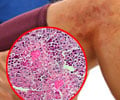The Inner-City Asthma Intervention (ICAI) implemented findings from successful clinical trials to help inner-city children with chronic asthma and their families.
The Inner-City Asthma Intervention (ICAI), a four-year project at 25 health care institutions around the country funded by the Centers for Disease Control & Prevention (CDC), implemented findings from successful clinical trials to help inner-city children with chronic asthma and their families.
The purpose of the ICAI project – published this month in Annals of Allergy, Asthma & Immunology, the scientific journal of the American College of Allergy, Asthma and Immunology (ACAAI) – was to determine whether the National Cooperative Inner-City Asthma Study (NCICAS) could be implemented in the community setting.Editorial author Meyer Kattan, M.D., of Mount Sinai School of Medicine, New York, describes the project as an “important first step to determine barriers that must be overcome to translate a successful clinical trial into a successful community-based program.” Dr. Kattan acknowledged that the experience gained in the ICAI identified these barriers and found some workable solutions.
Although only approximately half of the 4,174 children that were enrolled completed the core intervention activities, and a limited 1-site evaluation showed only small improvements, the ICAI served its purpose in providing a guide for implementation of an asthma program in poor, disadvantaged populations.
“Many asthma interventions such as NCICAS have been shown to be effective in the context of grant-funded clinical trials,” said ACAAI Vice President Jay M. Portnoy, M.D., who participated in testing the model at Children’s Mercy Hospitals and Clinics, Kansas City, Mo. “The real challenge is to implement them effectively in real-world situations where less than perfect adherence and follow-up occur.”
“I would like to see more implementation projects of this type. If we don’t follow-up our scientifically-based interventions with public dissemination, then research that is funded by our public dollars is unlikely to benefit our patients in the way that it should. Given the world-wide increase in asthma morbidity and mortality, we cannot afford to overlook this resource. We have a lot of work to do. The time to start is now,” Dr. Portnoy said.
The ICAI underscores the NCICAS finding that a social worker is best suited to address risk factors involving living conditions, social welfare and mental health issues of the family, while also serving as an asthma educator. The counselor intervention can be implemented in a variety of settings, and was recognized by the families as a value to them.
Advertisement











